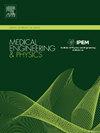DDUM: Deformable Dilated U-structure Module for coronary stenosis detection
IF 2.3
4区 医学
Q3 ENGINEERING, BIOMEDICAL
引用次数: 0
Abstract
Deep learning methods are increasingly popular in assisting physicians with diagnosing coronary artery disease and reducing errors caused by subjective judgment. However, accessing and labeling medical imaging data, especially coronary angiography data, is challenging. Consequently, models trained on such datasets often exhibit low accuracy, high false-positive rates, and limited generalization capabilities. We propose a Deformable Dilatable U-structure Module that can specialize a common network for coronary stenosis detection and enhance its generalization ability. Experiments demonstrate that our proposed module significantly improves the performance of various models. When applying DDUM to a model with ResNet50 as the backbone and faster R-CNN as the detector, the mean average precision increases from 33.76 to 42.39, a 25.56% improvement. Additionally, we show that DDUM enhances the network's generalization ability through transfer learning experiments. This module can improve the network's accuracy for stenosis detection and enhance the generalization ability of the original model. Fine-tuning reduces training costs and ensures that the model can be easily adapted and deployed across different devices.
DDUM:用于冠状动脉狭窄检测的变形扩张u型结构模块
深度学习方法在协助医生诊断冠状动脉疾病和减少主观判断造成的错误方面越来越受欢迎。然而,获取和标记医学成像数据,特别是冠状动脉造影数据,是具有挑战性的。因此,在这些数据集上训练的模型通常表现出低准确率、高假阳性率和有限的泛化能力。我们提出了一种可变形可扩张的u型结构模块,可以专门用于冠状动脉狭窄检测的通用网络,提高其泛化能力。实验表明,我们提出的模块显著提高了各种模型的性能。将DDUM应用于以ResNet50为主干、更快的R-CNN为检测器的模型时,平均精度从33.76提高到42.39,提高了25.56%。此外,我们还通过迁移学习实验证明了DDUM增强了网络的泛化能力。该模块可以提高网络的狭窄检测精度,增强原模型的泛化能力。微调降低了培训成本,并确保模型可以轻松地在不同的设备上进行调整和部署。
本文章由计算机程序翻译,如有差异,请以英文原文为准。
求助全文
约1分钟内获得全文
求助全文
来源期刊

Medical Engineering & Physics
工程技术-工程:生物医学
CiteScore
4.30
自引率
4.50%
发文量
172
审稿时长
3.0 months
期刊介绍:
Medical Engineering & Physics provides a forum for the publication of the latest developments in biomedical engineering, and reflects the essential multidisciplinary nature of the subject. The journal publishes in-depth critical reviews, scientific papers and technical notes. Our focus encompasses the application of the basic principles of physics and engineering to the development of medical devices and technology, with the ultimate aim of producing improvements in the quality of health care.Topics covered include biomechanics, biomaterials, mechanobiology, rehabilitation engineering, biomedical signal processing and medical device development. Medical Engineering & Physics aims to keep both engineers and clinicians abreast of the latest applications of technology to health care.
 求助内容:
求助内容: 应助结果提醒方式:
应助结果提醒方式:


